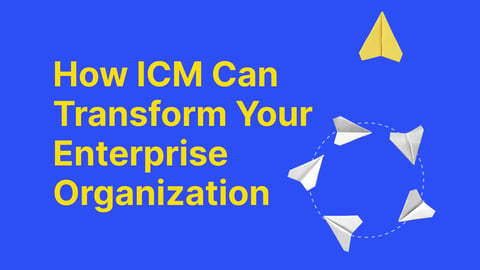For many insurance companies, success today is measured by customer satisfaction and employee productivity; inefficient processes create friction that can hold carriers back. The industry is turning to new technology solutions that automate and streamline everyday tasks to complement and enhance the productivity of skilled knowledge workers—producer performance.
Complexities of the Insurance Industry
Insurance is a complex business. Much more complex than Amazon or Netflix.
It’s an industry that has changed dramatically because of COVID-19.
Now, according to a McKinsey report on digital transformation in the insurance industry, consumers expect to be able to manage their P&C and life insurance needs with one click—without friction.
Distributors benefit as much from the elimination of friction, particularly related to producer performance.
Unnecessary Friction in the Insurance Industry
Friction is the experience of frustration when a task can’t be easily accomplished when there are just too many steps, or the “job” can’t be completed with the tools or the technology available.
In the insurance industry, common applications—the claims process to risk analysis—have a lot of necessary friction built in.
But there’s also a lot of unnecessary friction: In 2022, the technology on which many insurers still depend is dated. Some are still running legacy applications on green screens.
Most know they need to invest in modern solutions—existing software can no longer be serviced and must be sunset.
Fewer recognize the opportunity to sharpen a competitive edge with artificial intelligence.
Digital Transformation: Competitive Advantage
Insurers who have begun the process of digital transformation have a competitive advantage over those who know it’s needed but who haven’t made a significant change yet.
And those who prioritize AI can lead the industry—rather than play catch up.
Success in the insurance industry is a result of customer satisfaction and employee productivity.
Two 2020 agent surveys confirm success is a function of distribution. That is, it’s reflected strongly in producer performance measured in part by sales commissions.
And productivity is higher when there’s less friction, when incentive-performance plans are made more effective by AI, for instance.
Friction frustrates insurance agents, and their customers—and ultimately impedes revenue generation.
Friction is Only One Business Problem AI Can Help Address
According to McKinsey research on the insurance industry, “the term ‘digital transformation’ can underplay the response required, suggesting as it does that the change needed is purely technological. What is actually required is a fundamental rethink... It forces companies to rethink the sources of revenue and efficiency.”
“It’s using really sophisticated computing techniques that allow us to essentially tease out trends,” explains Joel Shapiro, Chief Analytics Officer at Varicent and a professor of data analytics at Northwestern University Kellogg School of Management. “It all starts with what’s your business problem or your business question or your business opportunity."
Business strategy requires executive insights—but AI can augment those insights, providing analyses of data sets that create visibility and eliminate silos.
“AI can make us really efficient,” Shapiro says. “We can be really good at customizing what we do, the right things at the right time for the right people to bring about the desired outcomes.”
Sources of revenue, for example.
AI can eliminate friction for insurers and distributors who need to manage volumes of information—and create ease for the ultimate end-user and source of revenue, the insurance customer.
Augmenting Intelligence for Producer Performance
For a lot of insurers, augmented intelligence is a secondary consideration. It’s what comes after a series of other changes under the broad auspices of digital transformation.
But there’s value in prioritizing AI sooner than later in the digital transformation journey.
AI has the potential to solve numerous business problems by making sense of quantities of data, by distilling insights from information.
In the insurance industry, AI can identify where there are opportunities to coach agents. It can determine when there is likely to be churn or turnover. It can predict what sales results are likely to be.
It can pinpoint where there is friction in a process and provide valuable insights for intervention, coaching, or course-corrective actions.
“We show results first,” says Dennis Murphy, Canadian Sales Manager at Varicent, of the AI use-case demonstrations his team gives to business and tech leaders in the insurance industry.
“We use existing data sets to show how our solution can represent all of our clients’ compensation plans in one place. We show them how easy it is to calculate their numbers and how easy it is to change the logic that informs them if they need to.”
That is, Dennis shows insurance industry and IT executives how frictionless their incentive plans can be and how easy to administer on a day-to-day basis—eliminating that unnecessary friction in the insurance industry.
AI Creates Ease—and a Competitive Edge
Using AI for incentive compensation management (ICM) reveals the link between employee performance, customer success, and business outcomes.
Proliferating AI applications to insurance unlocks the power of insurers’ data and provides insights into producer-performance analytics.
AI allows for elegant solutions to complex business challenges in the insurance industry.
Rather than playing catch up, prioritizing it can give insurers a competitive edge.
Learn more about how AI can help insurers by watching our What I Wish I Knew series episode on AI.




